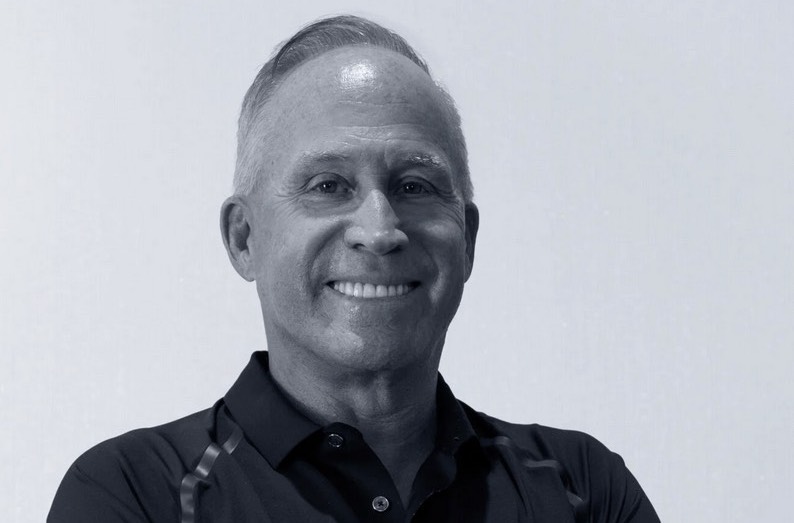From the Ground Up: Joe Farrell Continues to Leave His Mark in the Hamptons & Beyond

It wasn’t easy to get Joe Farrell on the phone.
He is on the move always, working every day. After decades of building his real estate development business — some may call it an empire — he still gets the same satisfaction in every phase of a build, from finding and purchasing a piece of land to the new owners moving in.
“I never get tired of building a new home,” says Farrell, the founder of Farrell Companies. “It is a fantastic experience.”
As a fourth grader, Farrell met the builder of the homes in his Huntington neighborhood, and he seemed to be doing very well as a developer.
“He drove a Cadillac and played golf every week, which in our neighborhood in 1972 was a big deal,” Farrell says. “Wow, that seemed like a pretty good life to me.”
Farrell grew up in a middle-class home. “A typical Irish-Catholic family,” he says. “Five children, my dad worked very hard.”
Farrell began to take up carpentry as a hobby, a unique choice for a child. His mother encouraged his work as he built treehouses, furniture, and other projects. He grew an interest in building and architecture. In high school, Farrell went through three years studying architecture, even winning awards for his designs. The next step was college to study architecture, but along the way, Farrell took some great advice.
“A man named Jerry Bloomberg gave me the best advice I had ever gotten,” says Farrell. “His advice was to focus on finance, learn how to develop, and then hire the architect. I took that road.”
Before he began building some of the most celebrated homes in the history of the Hamptons, Farrell took a job as an oil trader. He started at the bottom as a clerk, working hard to secure clients for his employer. When the opportunity to move up presented itself, Farrell took the chance—with some negotiating.
“I wanted a seat on the exchange, and it was life-changing,” says Farrell. “I was making $400 per week, and suddenly at age 27, I was making $27,000 a month. My eyes were opened wide.”
Farrell’s first personal property purchase was a co-op in Montauk which began his lifelong affair with Long Island’s historic East End. But it was a 1995 land purchase in Brookville that started his growth as one of the industry’s most well-known developers.
“I bought that first property for $275,000 and built a home which sold quickly and for a profit,” says Farrell. “It was a bad time financially for the country but I was able to take advantage of the situation and buy that property, and that is where it all started.”
Just one year later, Farrell made his first foray into the Hamptons with the purchase of three lots on Fourteen Hills Court in Water Mill. As he began to see his business grow, he had to learn how to ignore criticism of the quality and designs of his homes. But Farrell is not the type to be discouraged. There is some street fight in him, and a focus that drives him to take calculated risks, and compete on a different level.
“Everyone likes to criticize, but I close my ears to the noise and just work,” says Farrell. “I just keep building.”
One of Farrell’s mantras, and one he repeats to his three children, is, “I don’t own a rearview mirror.”
It is this type of thought process that allows Farrell and his family to build dream homes, only to sell them and move on with no regrets. Perhaps a perfect example is the construction of the most famous house in the Hamptons — Farrell’s Sandcastle.
Built in Bridgehampton, the 17,000-square-foot Sandcastle has 15 bedrooms, a gym, a spa, a steam room, a sauna and an indoor sunken jacuzzi a pool, a hot tub, a tennis court, an indoor racquet ball court, and a bowling alley, a 4,000-square-foot guest house, a baseball field, and an eight-car garage. The home has played host to some of the biggest names in show business, including Beyonce, Jay-Z, and Justin Bieber who played piano for Farrell’s kids when he was at the house.
The property also has a baseball diamond where, every Thursday, Farrell’s employees gathered for a game of softball.
Farrell built the house in 2007. He sensed a rough financial market ahead, and for the first time in his career divested from spec building prior to the crash. During this time, Farrell kept his employees and contractors busy when the rest of the building industry came to a halt.
“I was able to keep my employees working the entire time,” says Farrell. “And it’s a great house, and we loved it, but when it is time to go, you just go and don’t look back.”
The home sold in 2021 for $31 million.
Farrell has also built his reputation as an expert in the real estate industry. “Recently we were on an episode of The Miller Report with Suzanne Miller, a thought leader in her industry. Suzanne’s conversations with board members, chairmen, investors, and corporate officers offer unique insight into the headwinds and opportunities of national, New York, and international real estate.
“It was a great conversation,” says Farrell. “She is a great voice for the industry.”
Farrell and his family split their time between New York and Palm Beach, Florida. His company has a portfolio worth $3 billion. He has several properties for sale in the Hamptons, including 201 Jobs Lane in Bridgehampton and 165 Surfside Drive in Bridgehampton on the ocean (listed at $80 million). Farrell Wellington, a new project in Florida, is coming soon and will showcase 27 homes at the Polo Club.
Farrell and his family love living in the Hamptons. He is a bike rider, paddles and spends a lot of time by the ocean. The family also has a home in Ditch Plains, Montauk where his kids love to surf. Among the many restaurants there, Harvest is his favorite. (Try the scallops and cornmeal dish.)
Above all, Farrell loves his business. It is his expression and art, and its success is based on his ability to work with people, get to know them and establish real trust. Sometimes it becomes a friendship. That cannot happen unless there is passion in how you approach every aspect of your life, something Farrell does every day.
Speaking from a job site, Farrell is out of time and the cell connection is getting spotty. It took days to finally speak, but he made it happen. Before the end of the conversation, Farrell sounds appreciative of his success.
“It was a lot of work. It will always be a lot of work,” says Farrell. “But every day, I think about how much I truly love this job. When I believe in something, I don’t back down. I push forward and create opportunities. You can’t do that if you don’t love what you do.”
The Miller Report with Suzanne Miller can be heard on WABC Radio and through the WABC website.
Todd Shapiro is an award-winning publicist and associate publisher of Dan’s Papers.



